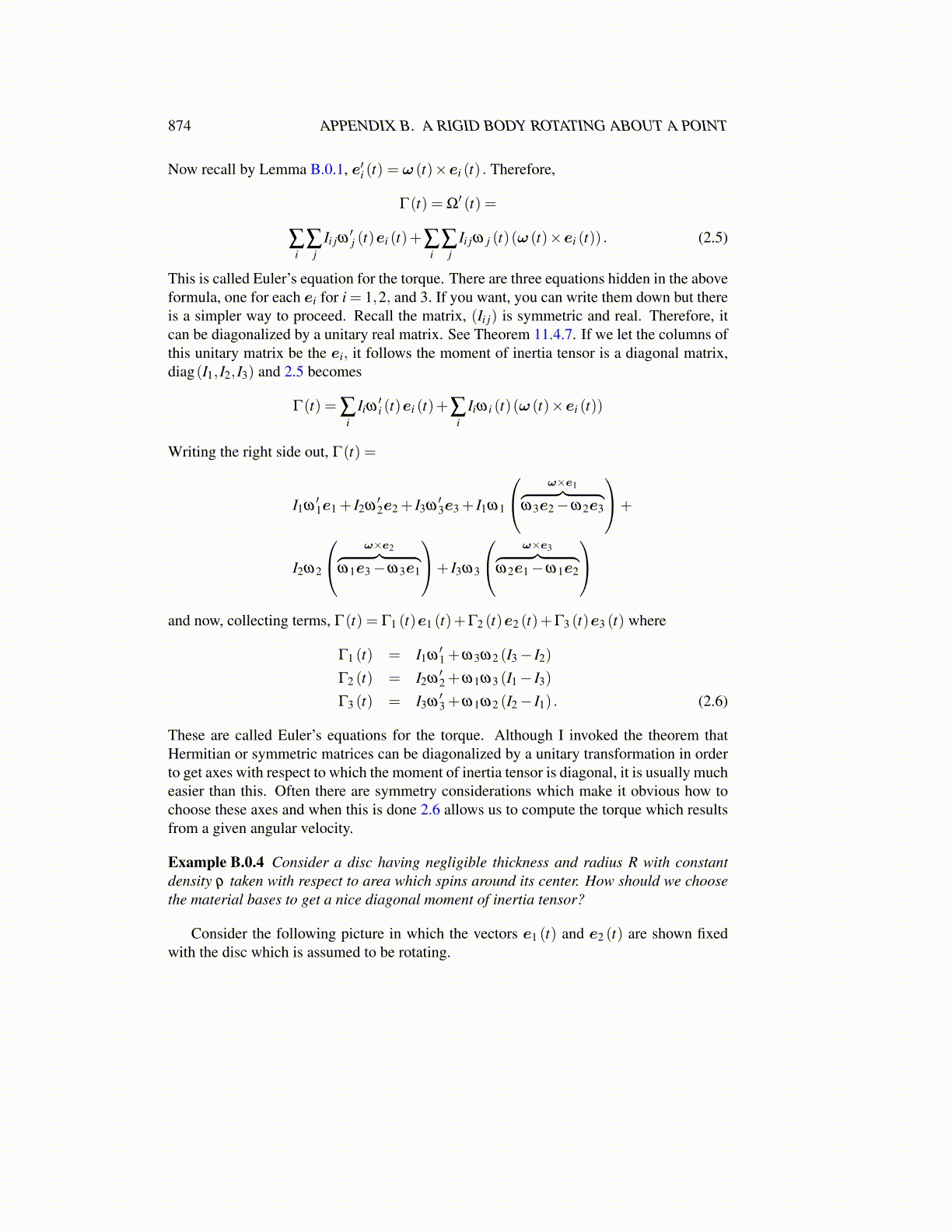
874 APPENDIX B. A RIGID BODY ROTATING ABOUT A POINT
Now recall by Lemma B.0.1, e′i (t) = ω (t)×ei (t) . Therefore,
Γ(t) = Ω′ (t) =
∑i
∑j
Ii jω′j (t)ei (t)+∑
i∑
jIi jω j (t)(ω (t)×ei (t)) . (2.5)
This is called Euler’s equation for the torque. There are three equations hidden in the aboveformula, one for each ei for i = 1,2, and 3. If you want, you can write them down but thereis a simpler way to proceed. Recall the matrix, (Ii j) is symmetric and real. Therefore, itcan be diagonalized by a unitary real matrix. See Theorem 11.4.7. If we let the columns ofthis unitary matrix be the ei, it follows the moment of inertia tensor is a diagonal matrix,diag(I1, I2, I3) and 2.5 becomes
Γ(t) = ∑i
Iiω′i (t)ei (t)+∑
iIiω i (t)(ω (t)×ei (t))
Writing the right side out, Γ(t) =
I1ω′1e1 + I2ω
′2e2 + I3ω
′3e3 + I1ω1
ω×e1︷ ︸︸ ︷ω3e2−ω2e3
+
I2ω2
ω×e2︷ ︸︸ ︷ω1e3−ω3e1
+ I3ω3
ω×e3︷ ︸︸ ︷ω2e1−ω1e2
and now, collecting terms, Γ(t) = Γ1 (t)e1 (t)+Γ2 (t)e2 (t)+Γ3 (t)e3 (t) where
Γ1 (t) = I1ω′1 +ω3ω2 (I3− I2)
Γ2 (t) = I2ω′2 +ω1ω3 (I1− I3)
Γ3 (t) = I3ω′3 +ω1ω2 (I2− I1) . (2.6)
These are called Euler’s equations for the torque. Although I invoked the theorem thatHermitian or symmetric matrices can be diagonalized by a unitary transformation in orderto get axes with respect to which the moment of inertia tensor is diagonal, it is usually mucheasier than this. Often there are symmetry considerations which make it obvious how tochoose these axes and when this is done 2.6 allows us to compute the torque which resultsfrom a given angular velocity.
Example B.0.4 Consider a disc having negligible thickness and radius R with constantdensity ρ taken with respect to area which spins around its center. How should we choosethe material bases to get a nice diagonal moment of inertia tensor?
Consider the following picture in which the vectors e1 (t) and e2 (t) are shown fixedwith the disc which is assumed to be rotating.